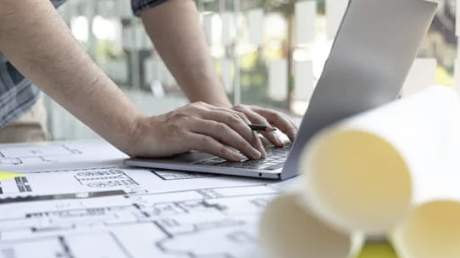The construction industry, historically characterized by its resilience and adaptability, has undergone a profound transformation in response to the challenges posed by the COVID-19 pandemic. In this blog post, we delve into the enduring changes brought about by the pandemic, focusing on the pivotal shift towards remote collaboration tools, virtual site visits, and enhanced safety protocols.
Remote Collaboration: Breaking Down Geographic Barriers
One of the most significant post-pandemic adaptations in the construction industry is the widespread adoption of remote collaboration tools. The days of in-person meetings being the only option for project discussions are now a thing of the past. Video conferencing, project management platforms, and collaborative software have become essential in connecting teams spread across geographical locations. This shift not only facilitates real-time communication but also breaks down barriers, enabling seamless collaboration among stakeholders irrespective of their physical location.
Virtual Site Visits: Navigating Projects from Anywhere
The advent of virtual site visits has revolutionized the way construction professionals inspect and manage projects. Leveraging technologies, stakeholders can now virtually navigate construction sites from the comfort of their offices or homes. This not only enhances efficiency but also minimizes the need for frequent physical site visits, reducing travel-related costs and carbon footprints.
Safety Protocols: A Non-Negotiable Priority
The pandemic has underscored the paramount importance of safety in construction. Safety protocols, once implemented as a response to the immediate threat of COVID-19, have now become an integral part of standard operating procedures. From temperature checks and sanitization stations to reimagined site layouts for social distancing, the industry has elevated its commitment to worker safety. These measures not only address immediate health concerns but also contribute to a culture of well-being within construction teams.
Hybrid Work Models: Balancing Flexibility and Efficiency
The adoption of remote collaboration tools has facilitated the rise of hybrid work models in construction. Project managers, architects, and engineers now have the flexibility to work both on-site and remotely. This hybrid approach not only accommodates the diverse needs of the workforce but also enhances overall project efficiency. It’s a testament to the industry’s resilience and adaptability in embracing new ways of working.
Virtual Twins and Advanced Analytics: Predictive Insights for Project Success
In the post-pandemic construction landscape, virtual twins and advanced analytics are emerging as powerful tools for project management. Digital twins, virtual replicas of physical structures, enable real-time monitoring and analysis. This technology, combined with advanced analytics, provides predictive insights into construction projects, allowing for proactive decision-making and risk mitigation.
Conclusion:
As the construction industry charts its course in a post-pandemic world, the adaptations born out of necessity are now defining a new era of innovation and efficiency. Remote collaboration, virtual site visits, safety protocols, and hybrid work models are not merely responses to a crisis; they represent a paradigm shift towards a more resilient, flexible, and technologically advanced construction industry. By embracing these changes, the industry is not only overcoming immediate challenges but is also laying the foundation for a future where innovation and adaptability are central to its success. Stay tuned as we continue to explore the dynamic evolution of construction practices in the months and years ahead.



